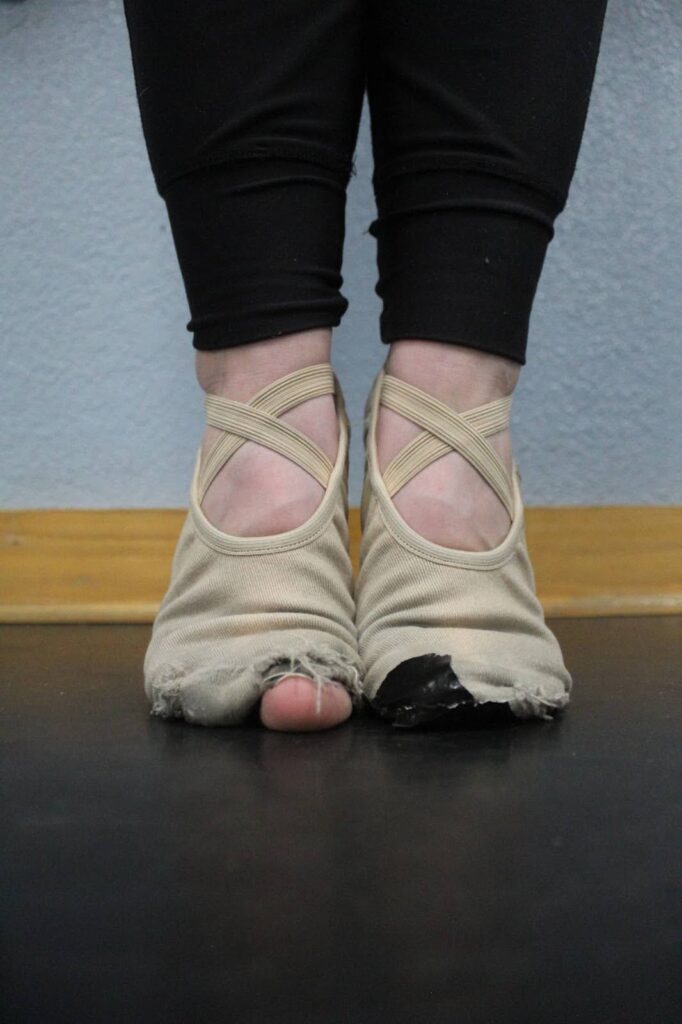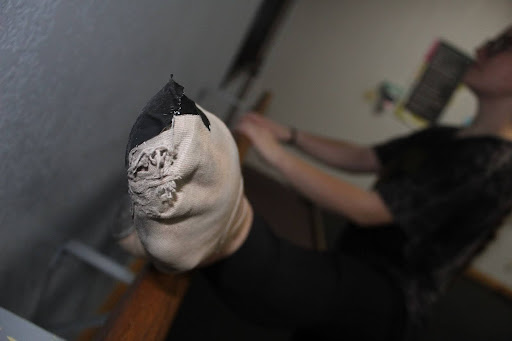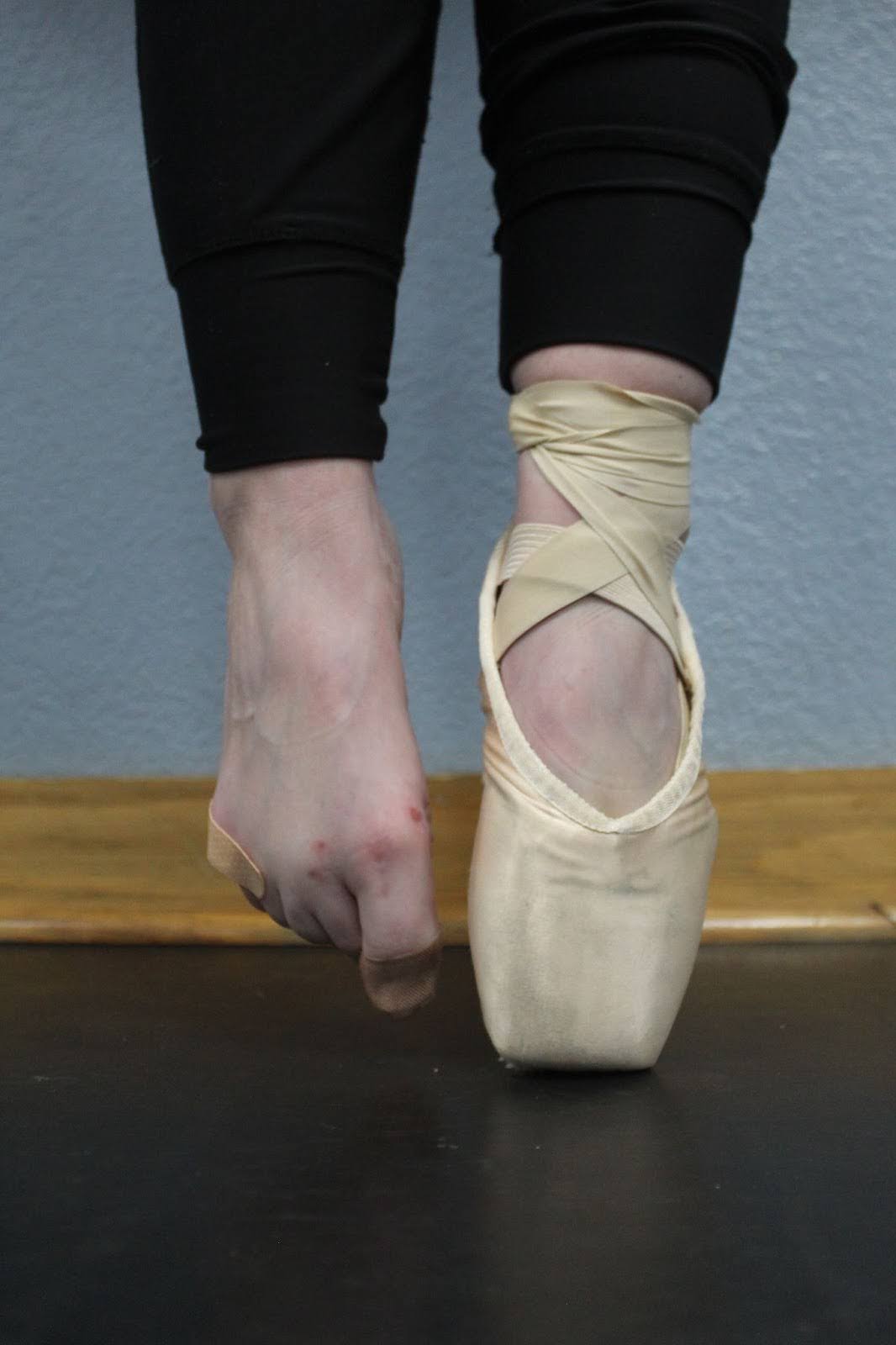Striving for perfection when perfection is impossible is a conundrum high-level performers face.
Perhaps no more so than in dance.
This unattainable metric raises other questions. How does a dancer maintain a personal life when dance takes up so much time? How can the lessons from a demanding activity be applied outside the studio or performance space? And, perhaps most importantly, what are the costs – and joys – that come from such single-minded pursuit?
What is dance?

What is dance? The English dictionary defines dance as “a series of movements that match the speed and rhythm of a piece of music.”
That explains everything and nothing at the same time.
When you think of a dancer, who do you think about? You might think of the famous Native American Prima Ballerina Maria Tallchief or tap dancer Bill Robinson. The nation’s more than 13,000 dancers work hard to build up their technique and stamina. There’s a wide variety of dance styles today including, but not limited to, classical ballet, tap, hip-hop, contemporary, and cultural dancing like flamenco, Jarabe Tapatio and Bollywood.
Dancers work hard to learn whatever is thrown at them, and fast.
Dancers go through rigorous training. A college student can have classes Monday through Friday and still have to perform on the weekend, leaving little time outside dance for other activities.
“It’s taking a toll on my family … my parents having to drive me and pick me up, all the extra things that dance includes, being away from my siblings and my parents for hours,” said Abigail Orr, a dancer and ambassador at Ascend Dance Studios.
Juggling school, dance, and personal life is challenging. Sometimes there isn’t enough time in one day to do it all.
Balance



Dancers pull turns from what seems like out of nowhere. But they’re more than pretty, fast turns. It all comes down to balance.
You must engage your core, turn out, spot, close your ribcage, and have a high relevé in a single turn.
Engaging your core means activating the muscles in your torso. To turn out, you must rotate your hips and think about your inner thighs rotating to the front. Spotting is when a dancer focuses on an object and whips their head around while turning to stay focused on that object. Closing your ribcage means not opening your ribcage too much or you’ll lose the engagement in your core. But you also can’t sink your ribcage. You have to find a happy medium. A high relevé is being on the ball of your foot and staying there to keep turning and/or balance.
All of that, in a single turn. But for a turn, you have to have balance. All these things factor into a good balance.
Thinking about that in every movement in dance is very important. Even in the way you stand.
That trickles into our personal lives as well. We balance our schoolwork and our personal lives the same way we balance in a turn. Every now and then, something falls out of place. With corrections and guidance from the right teachers, we can put that piece back.
“It all comes down to balance, which is really hard to maintain just in normal life anyways,” said Ashley Untrauer, an instructor at Ascend Dance Studio.

Studio Etiquette
When you come to class, always be prepared. Have all your shoes, have your hair pulled back neatly and out of the way, know the choreography and have a good attitude.
If you come to class missing a shoe or you don’t know the choreography, you’re in trouble. Dance teachers plan dances to put on dancers who are willing to work hard. If a teacher gives someone who doesn’t understand the choreography, their vision of the dance fades away.
And the old adage applies: Early is on time. On time is late. Late … well, that’s bad, because performances start on time, not when people decide to show up.
Always have a good attitude towards the teachers, other dancers, and the studio. Thank your teachers after class and after every correction they give. Remember, they’re teaching you to be respectful and healthy dancers.
The same behaviors can go a long way in one’s personal and professional lives as well. They’re just one of the many lessons dance can hold outside the studio walls or off the stage.
And while most of the takeaways from dance are overwhelmingly positive – discipline, conditioning, self-expression – a few are decidedly negative.
The ‘Dark Side’ of Dance
Dance can be stressful. It takes a lot of mental strength to balance everything out. Sometimes, the process requires more mental toughness than physical strength.
“Dance is 10% physical and 90% mental,” Jessie Dolezel, owner and CEO of Ascend Dance Studio, said.
Dancers look in a mirror almost every day. Their bodies have to appear a certain way to look “pleasing” to the audience. That can do a lot of damage to a dancer’s self-esteem and body image.
Low self-esteem, perfectionism, anxiety, eating disorders, depression and body dysmorphia come with the territory for too many dancers.
Dancers have to pay attention to the smallest details. If one thing is off, everything falls apart. This can lead to perfectionism, body dysmorphia and eating disorders. More than 75% of dancers struggle with body dysmorphia. Twelve percent of dancers have eating disorders. 20.8% of dancers had at least moderate symptoms of either depression, anxiety or eating disorders.
Finding the love and joy of dancing can be hard when you’re constantly critiquing yourself.
“There’s been the thoughts like skipping meals … and wanting to feel better even though it’s not going to make me feel better,” Orr said.
“It’s not normal to look at yourself in the mirror for multiple hours a day. We’re spending hours a week in the mirror; it’s almost impossible not to dissect yourself as you’re dancing. That alone can be detrimental. Even though the mirror is supposed to be a teaching tool, it can cause a lot of harm,” said Alissa Cartwright, an instructor at Ascend Dance Studio.
“I had to learn to love my body for what it did, not for how it looks,” she said.
Injuries

If you do a dance move wrong, your chances of getting injured rise. Forced turnout can cause knee complications, and landing from a jump incorrectly can cause achilles tendinitis.
Navigating through dance with an injury that’s constantly in the way is challenging. Dance can be dangerous if it’s not taught properly. And injury is an ever-present concern.
Dancing can leave long-lasting injuries that only get worse as you grow older. Many dance professionals have to retire early because of long-lasting injuries. Wendy Whelan, an associate artistic director of the New York City Ballet and a former dancer at New York City Ballet, retired because of a labral tear in her hip. Her experience is one many formerly elite dancers share.
“There’s nerve damage, pinched nerves, torn muscles, torn ligaments, you can tear a lot of things. So you can mess up your body if you’re not careful,” Untrauer said.
Finding the ‘Bright Side’ of Dancing
There may be hardships in dance, but dancers always strive for a good performance. Good performance comes from working hard, resting when needed, fueling your body and practicing.
Dance is about love and showing that love to the people around us. A dancer could do five turns in a row, but that doesn’t mean they love dance. Dance is a commitment. Dance is a choice.
“You don’t have to dance, you get to dance,” said Jenna Mcwilliams, instructor at Ascend Dance Studio.
“It’s your escape, it’s the way you dance your emotions and everything that’s going on. It’s a good way to just let go and get away,” Orr said.
“Dance has helped me be responsible and persevere. You have to keep working,” Untrauer said.
In the end, for most dancers, dance is an escape. Dance is freedom. Dance is home.
“It’s hard, but I couldn’t just walk away from dance or stop taking classes. It’s my life,” Orr said.

